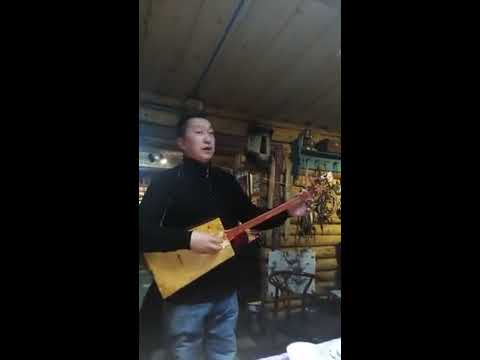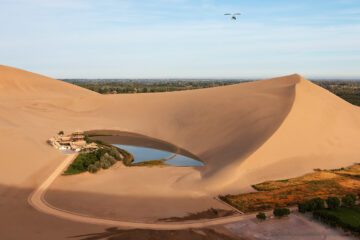Xinjiang is often called the Far West of China. Read my post to learn more about this autonomous region, and you can find some rare pictures of the Tuva and Hasake ethnic minorities.
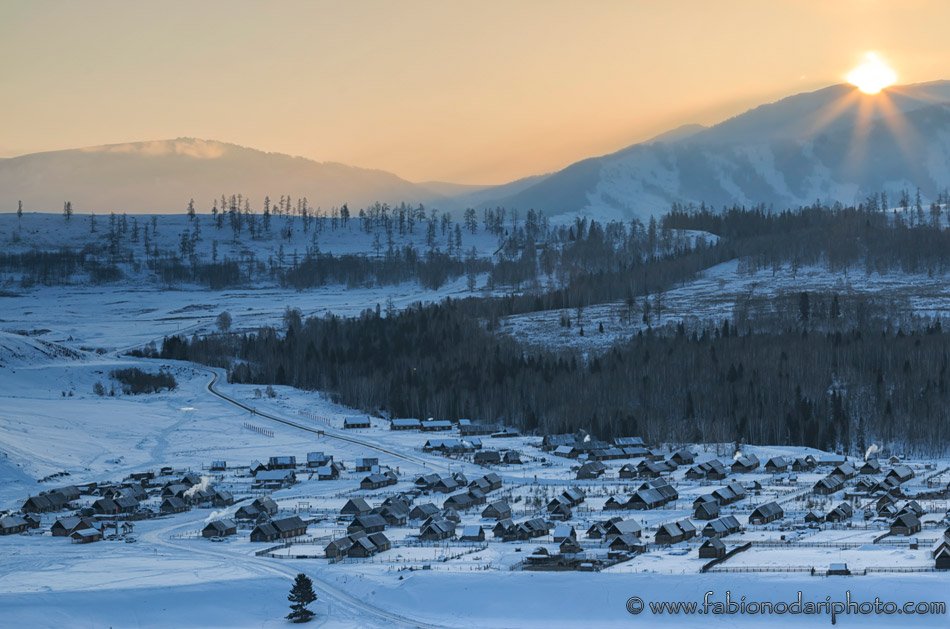
Xinjiang is China’s largest autonomous region and one of the least densely populated. If China is a country generally misunderstood by most of the world, Xinjiang is even more so. Most of the region is inhabited by Muslims, and unfortunately, due to some clashes between the local population and the police, it is often associated with terrorism.
Even though I myself know China quite well, I didn’t know much about this area. So, I gladly accepted the invitation from the Xinjiang Tourist Board to visit the northernmost part of the region, on the border between Russian Siberia, Kazakhstan, and Mongolia. I have to say that although it was a short trip, I was fascinated by the warmth of the local people who, while living in places with freezing temperatures (-20 °C or colder), always made me feel welcome. This trip reminded me of how important it is to form a personal opinion based on facts and not on things heard from other sources, just as it happened to me visiting Jordan.
The Tuva and Hasake minorities in the Kanas Lake area
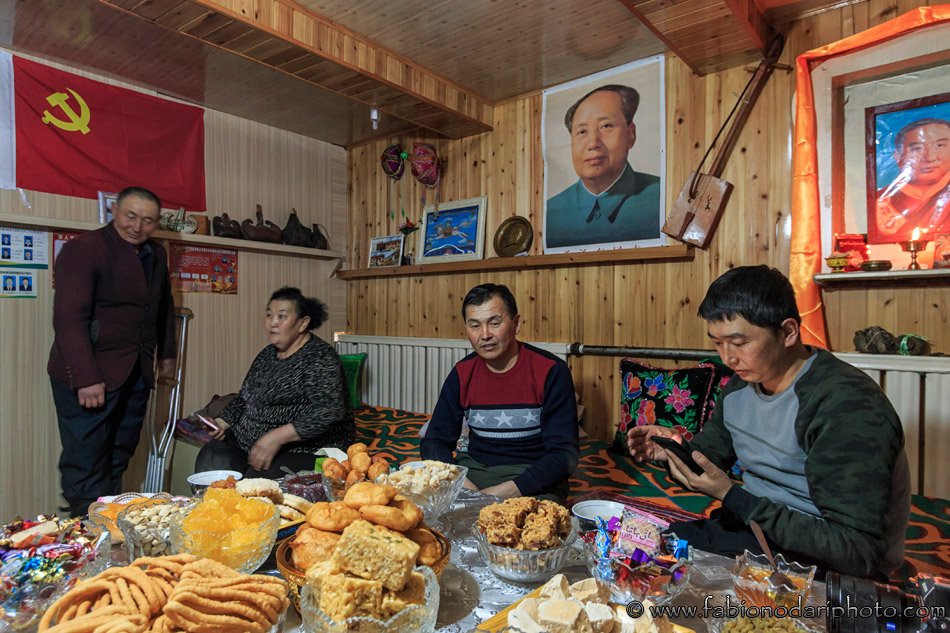
I’m always happy when I have the privilege to share some moments with people who live in remote areas, such as this family of the Tuva minority in the beautiful Hemu village. Hemu is considered one of the most beautiful villages in the entire autonomous region, and I must say that its fame is fully justified. Unlike many other places in China, where fake old towns full of shops have been built to attract Chinese tourists and where, in reality, nobody lives, the Hemu village is inhabited by locals.
It vaguely reminded me of some Alpine villages. The difference is that the houses are not built with stones but wood. The population is divided mainly into two ethnic groups: the Tuva, of Mongolian origin and Buddhist religion, and the Hasake, of Kazakh origin and Muslim religion. The two populations live in peace and try to maintain their traditions.
Here are some pictures of the Tuva men who celebrate the Chinese New Year according to their Buddhist traditions:
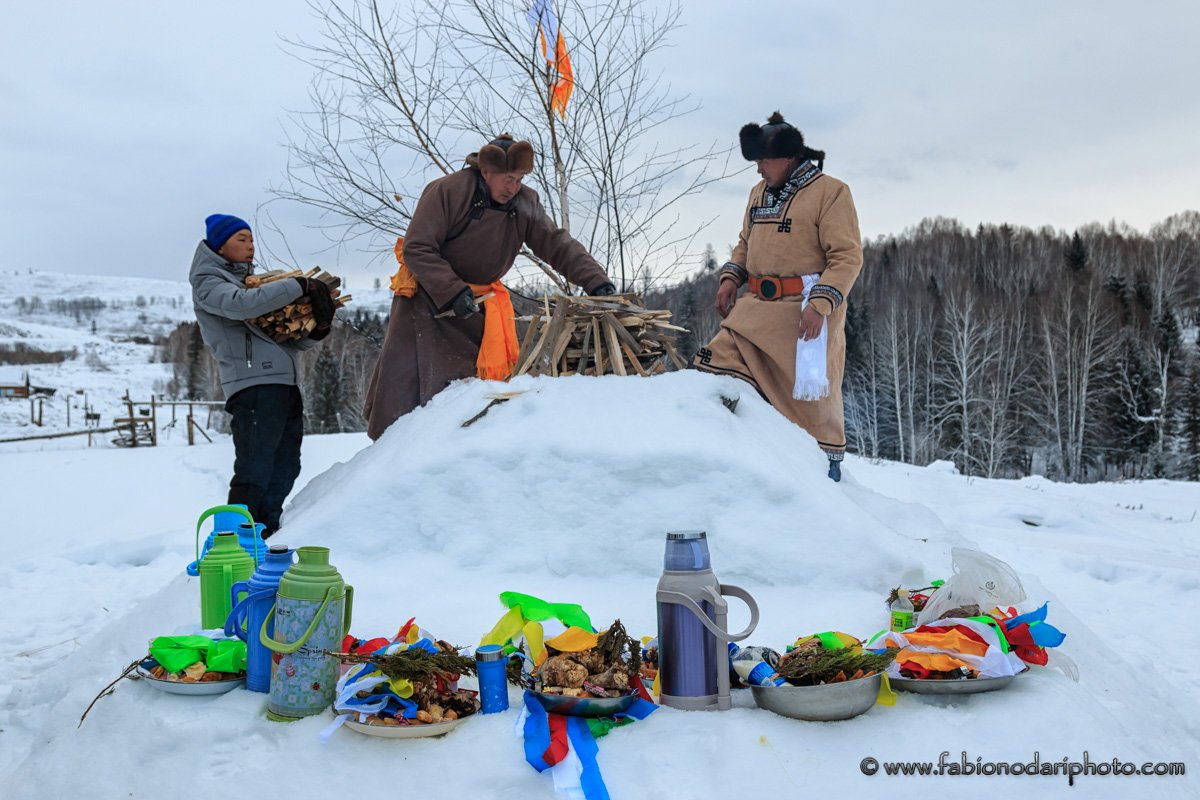
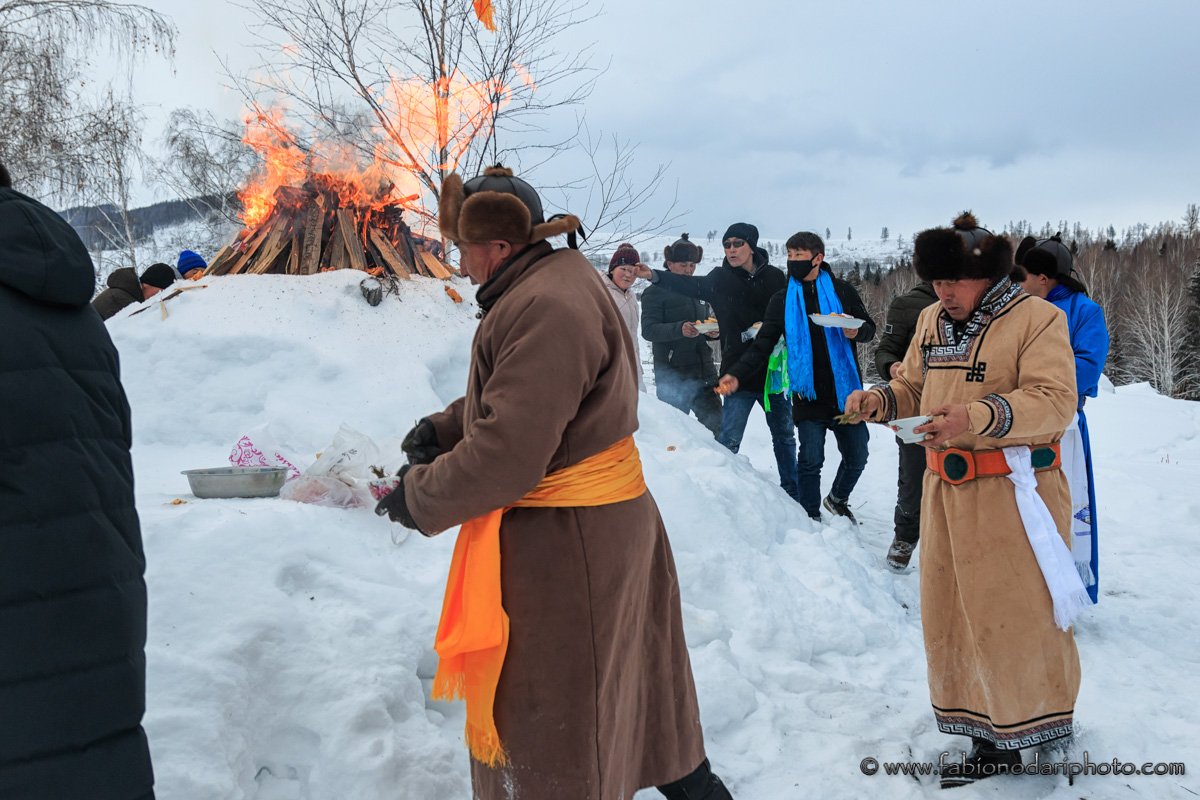
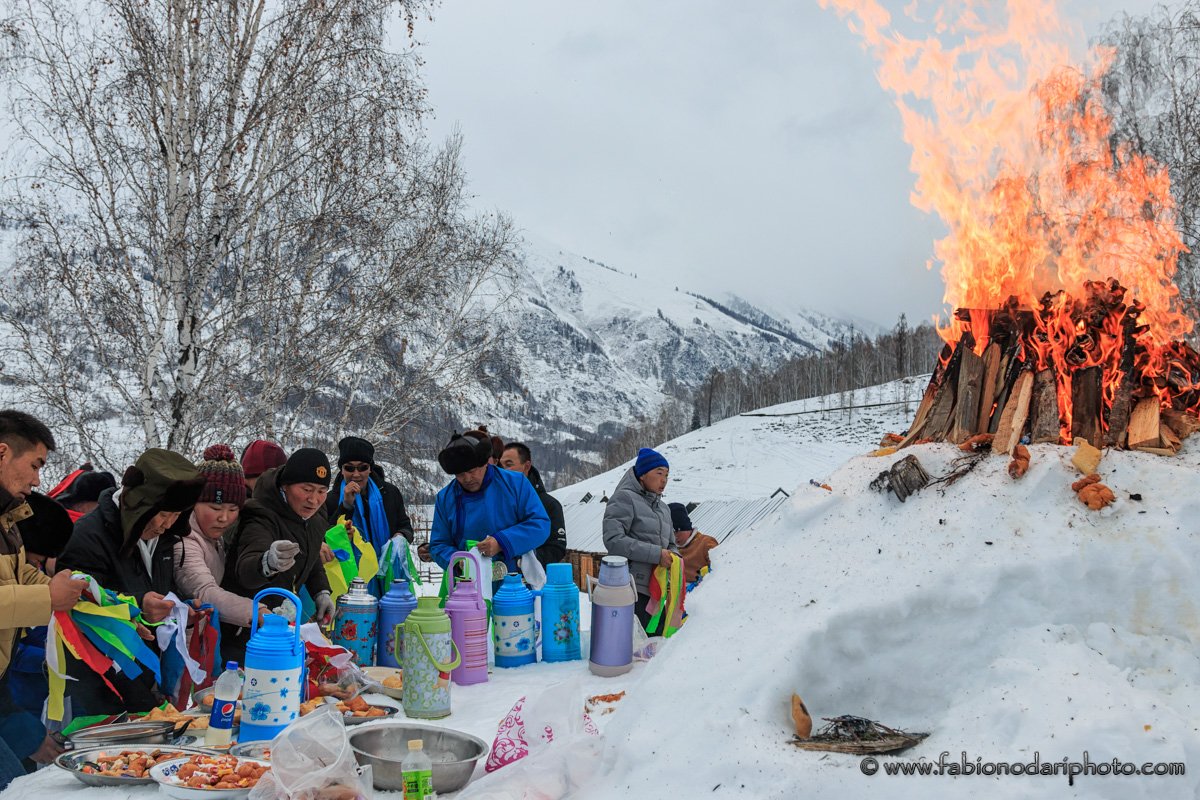
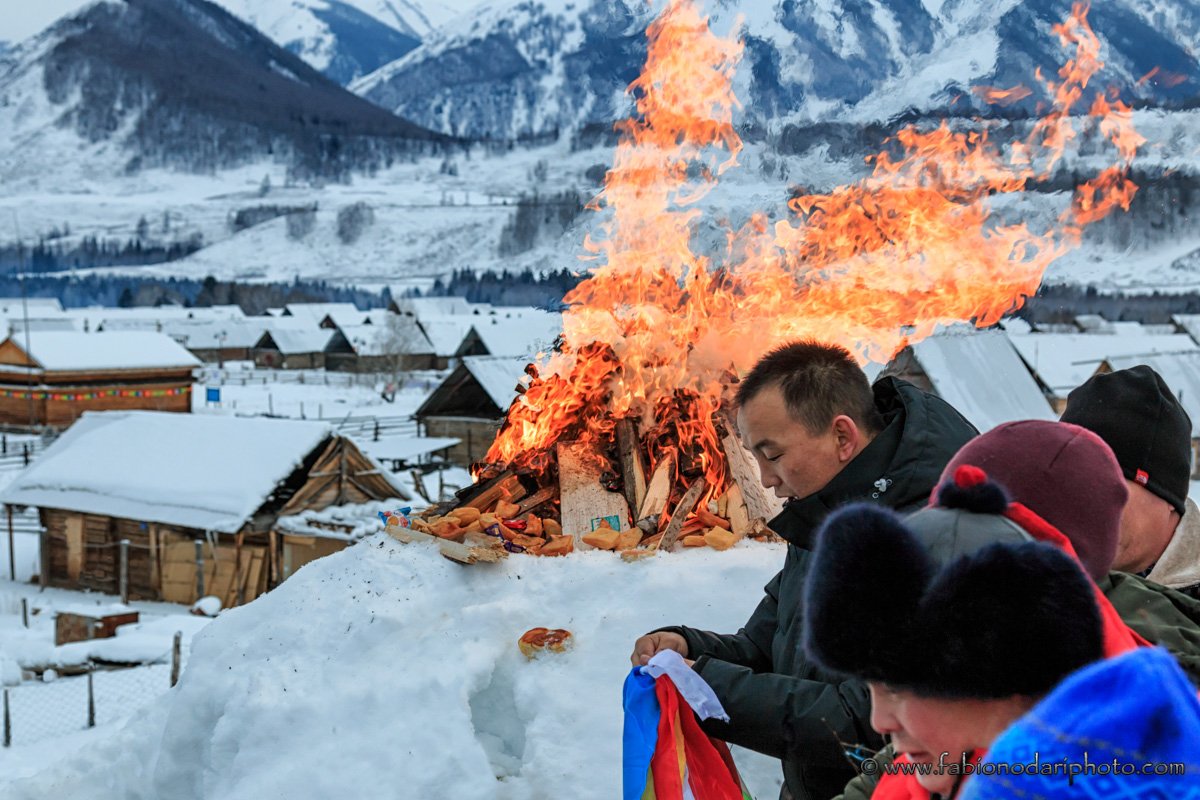

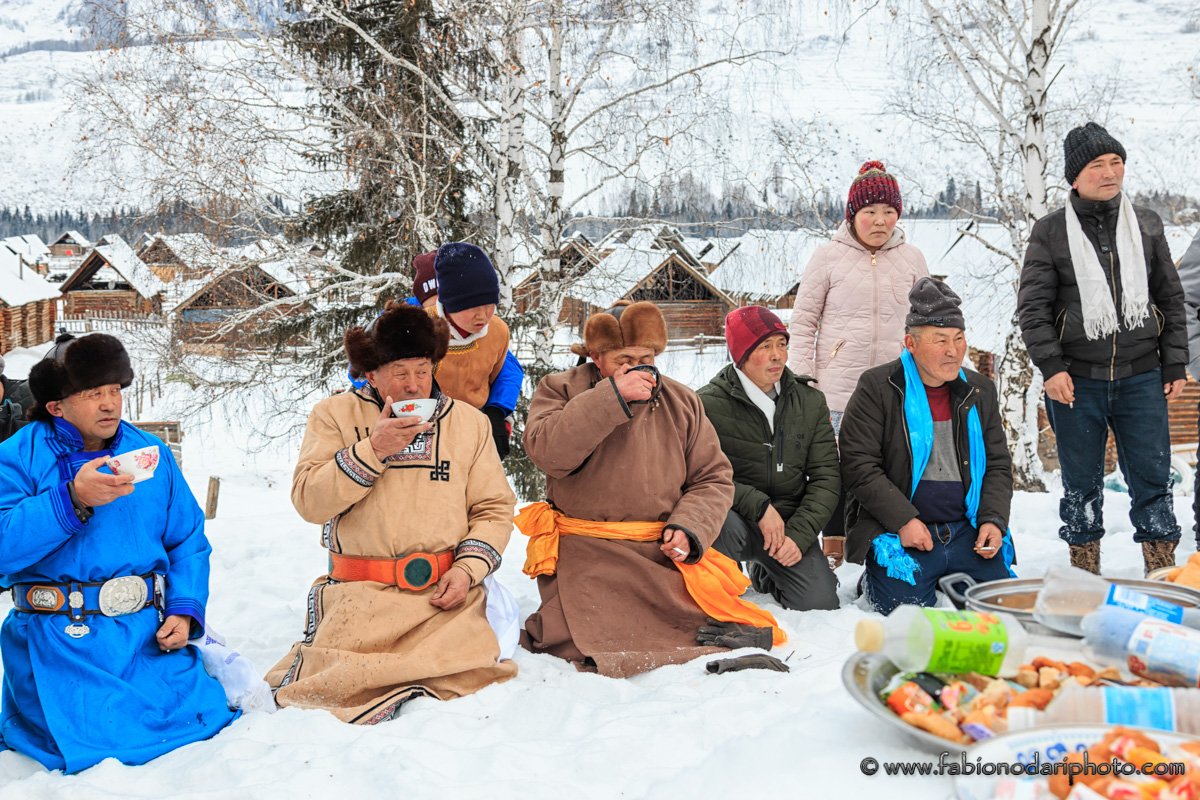
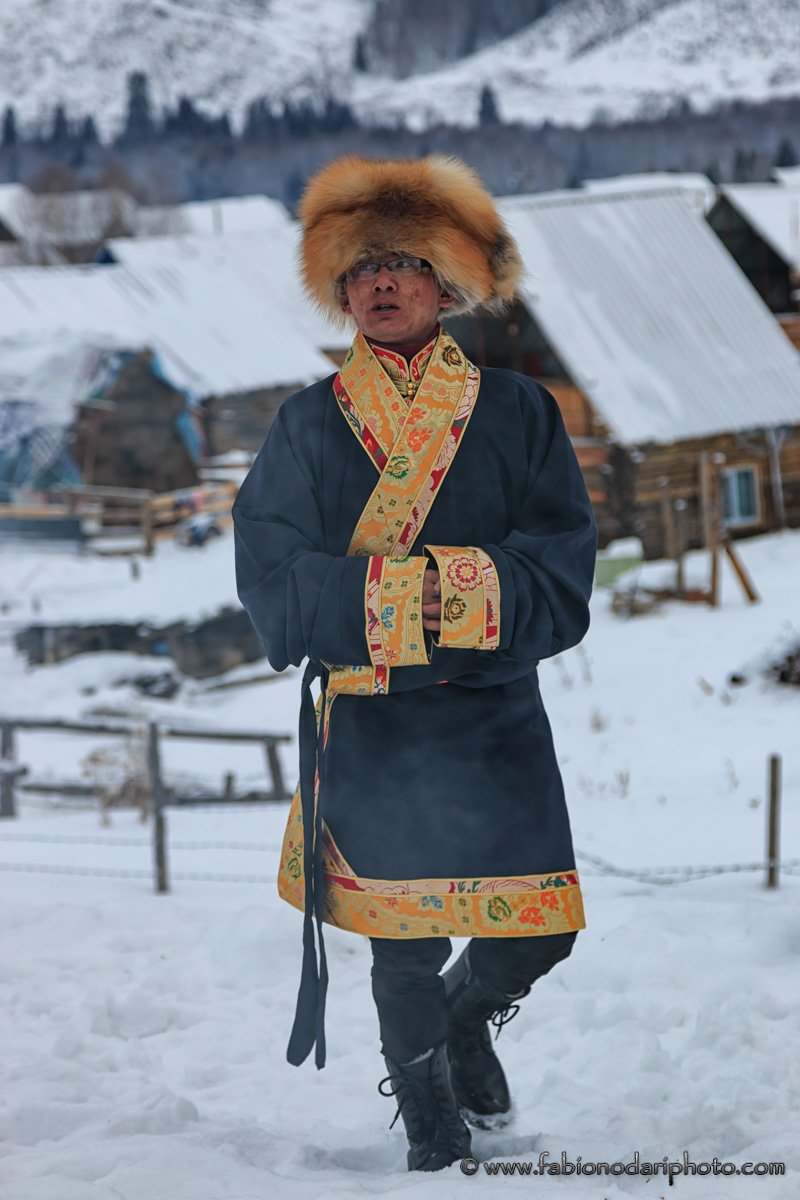
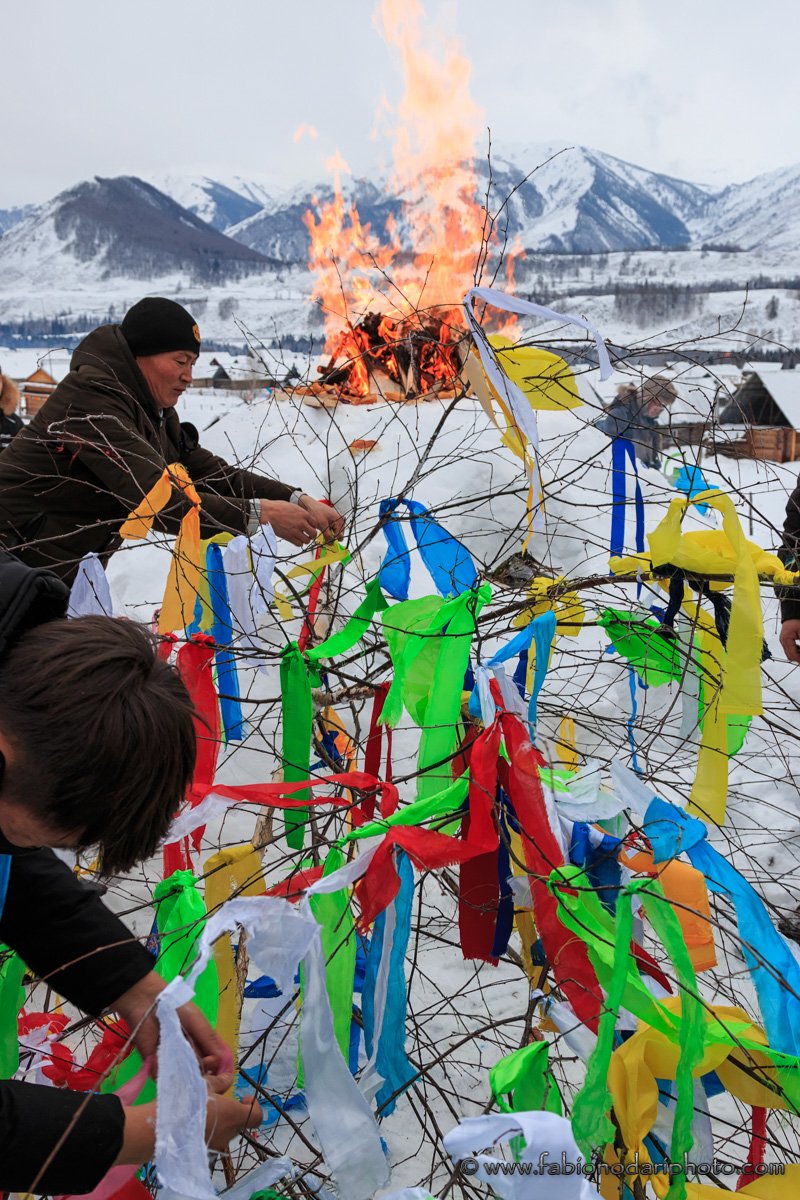
According to some recent archaeological discoveries, it seems that man has used skis in these mountains in the Altai region for the first time. Skiing was used to hunt, and its use then spread throughout the rest of the world.
It’s always difficult to say who truly was the first to create a tool or instrument, but what is certain is that the local populations have a millenary tradition related to skiing. While I visited these areas, I even attended a couple of local ski races, something totally unexpected and not what you would expect to see in China.
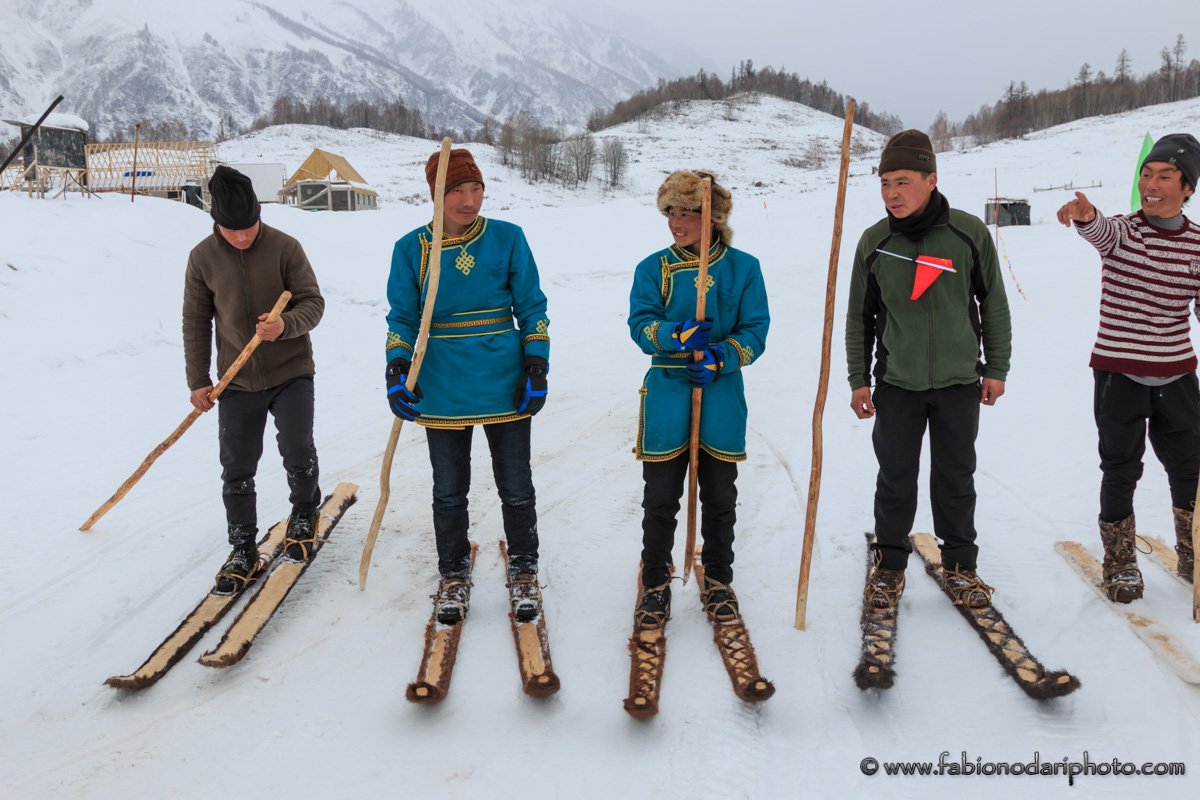
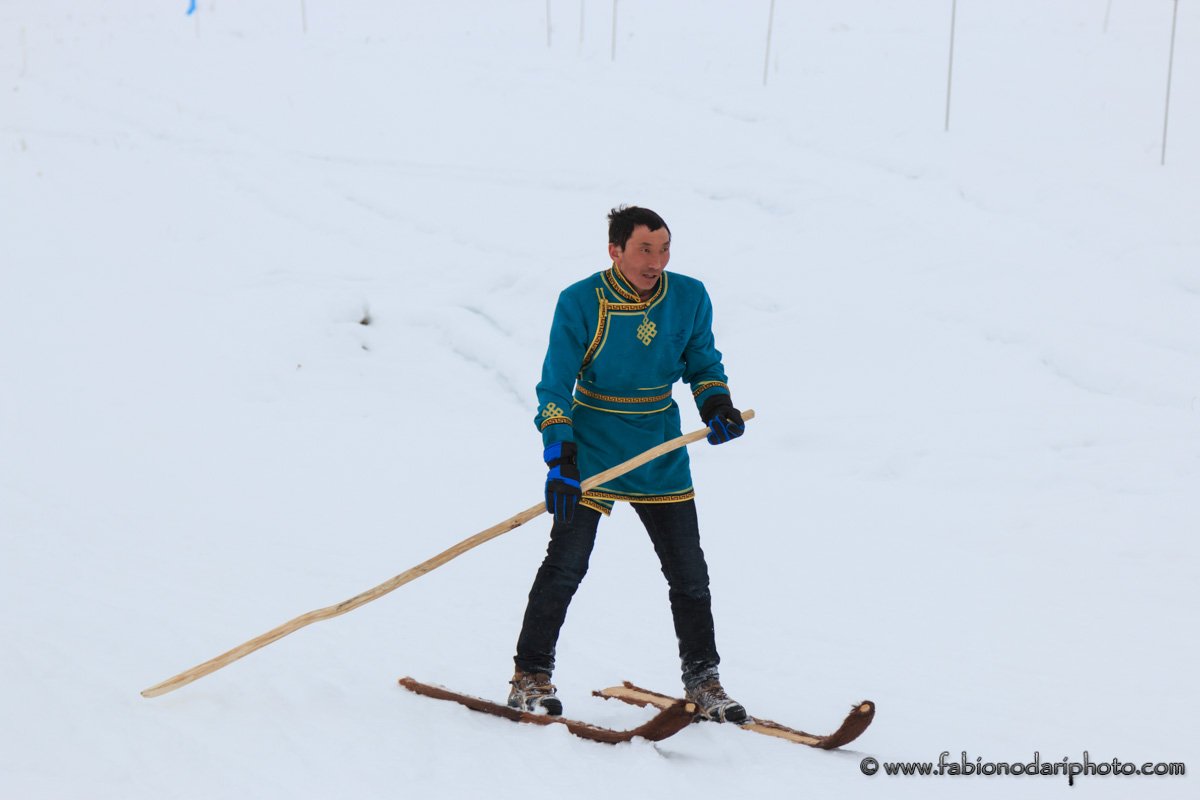
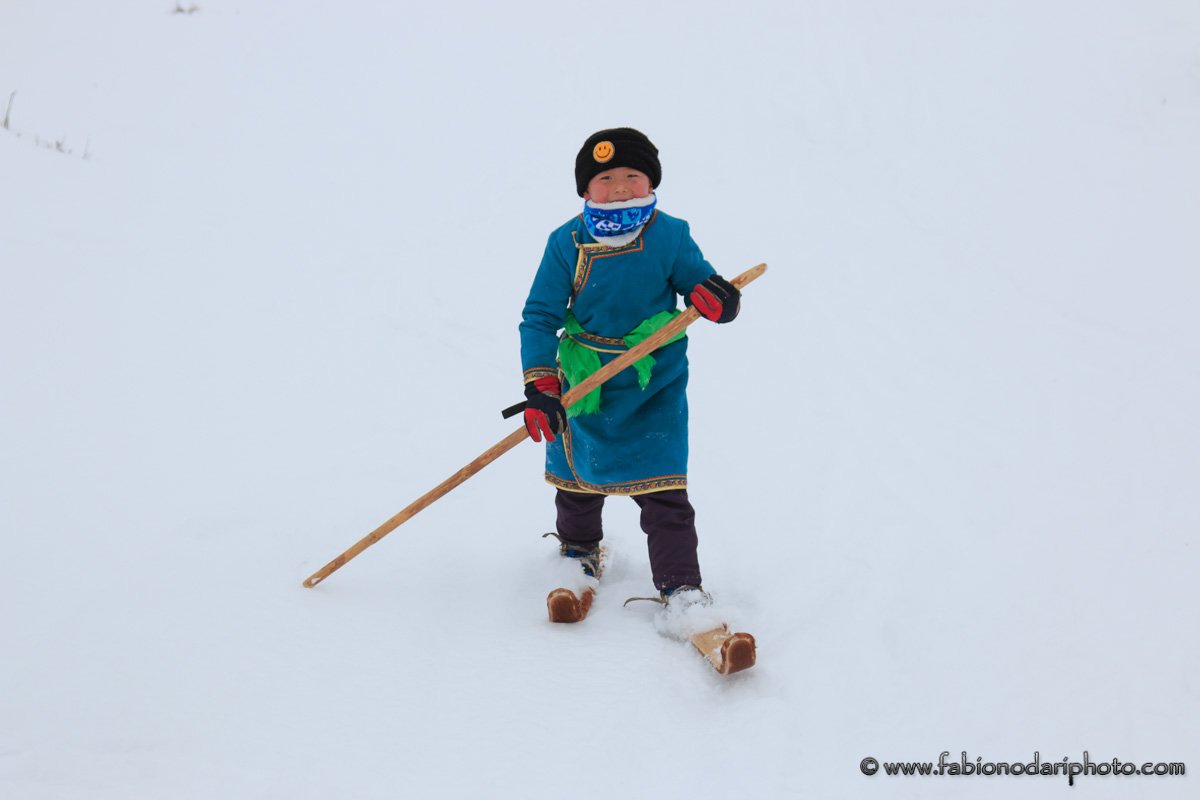
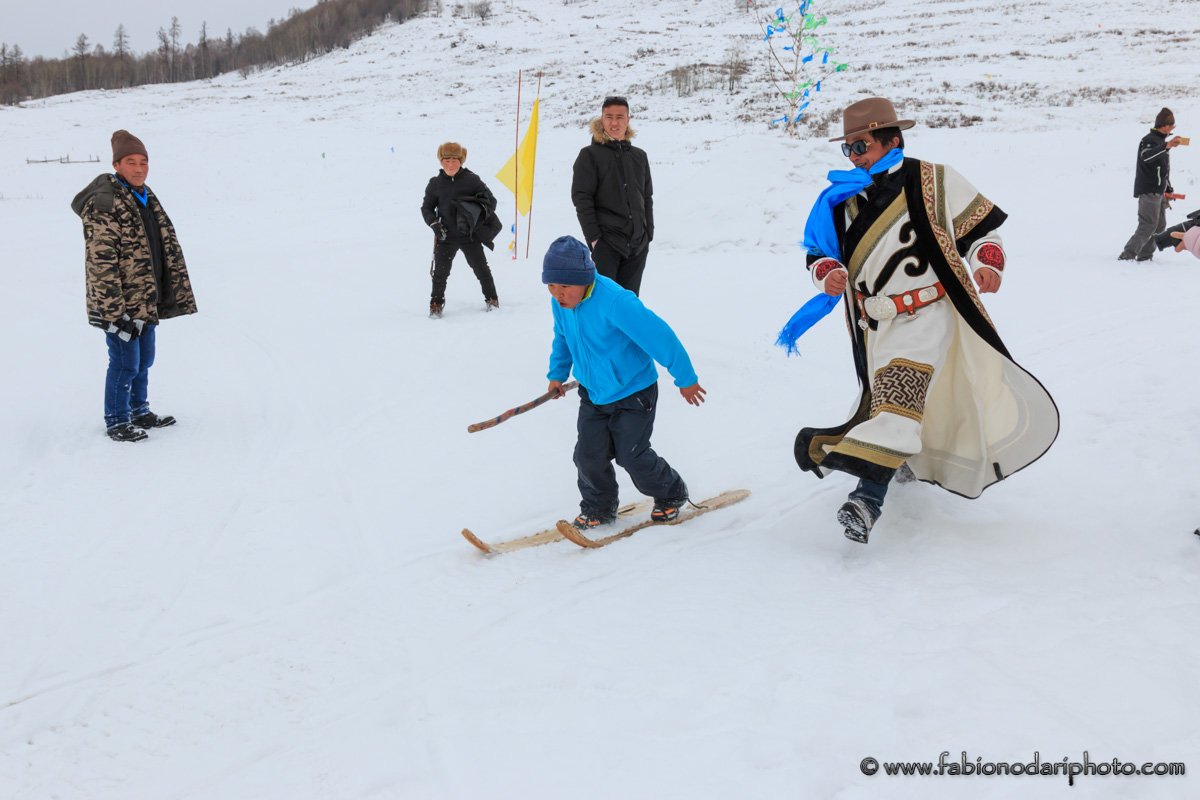
Another tradition kept alive by the population of Hasake and Tuva is the horse racing on snow:
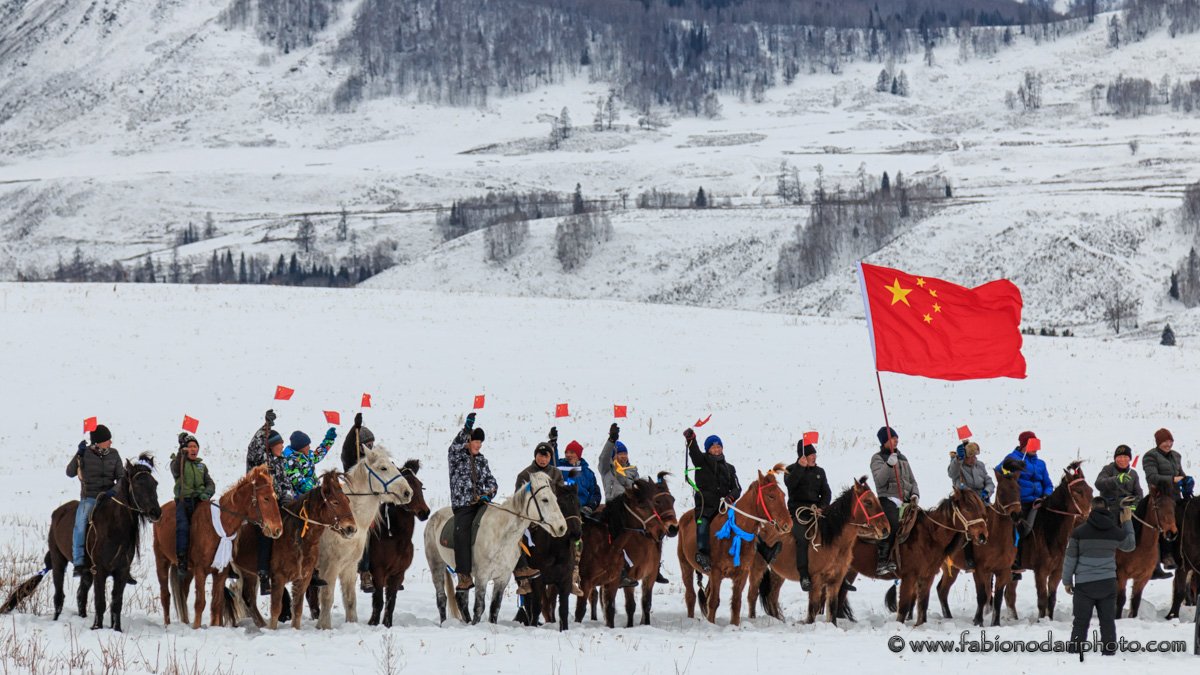
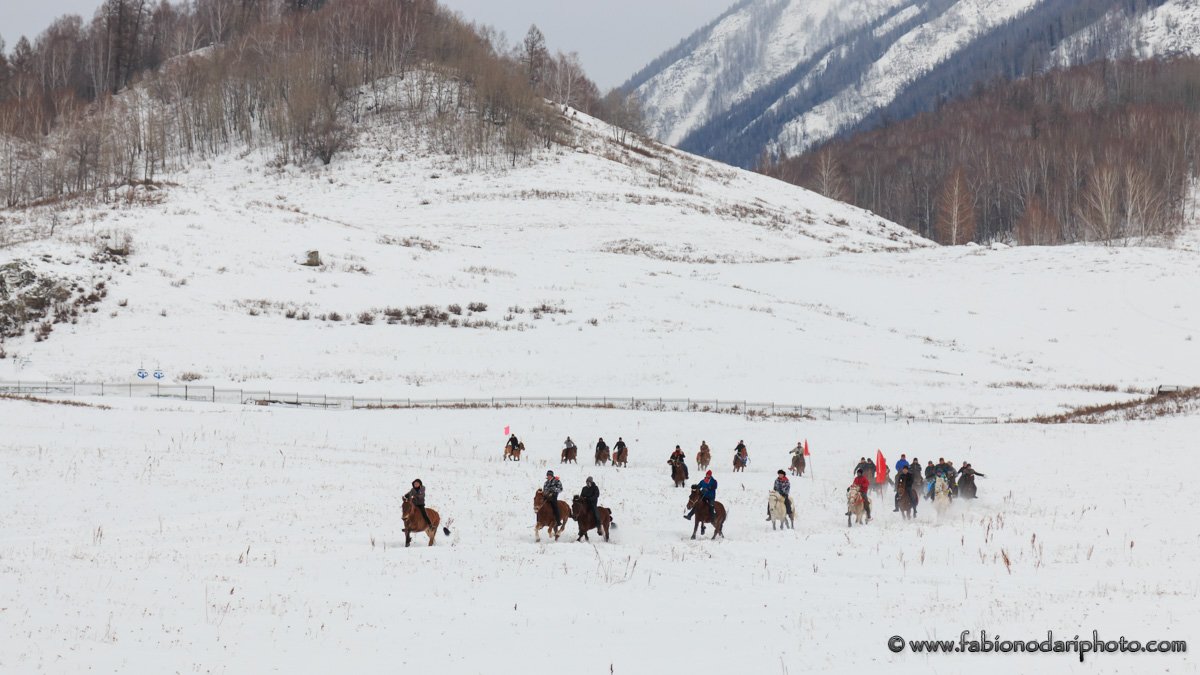
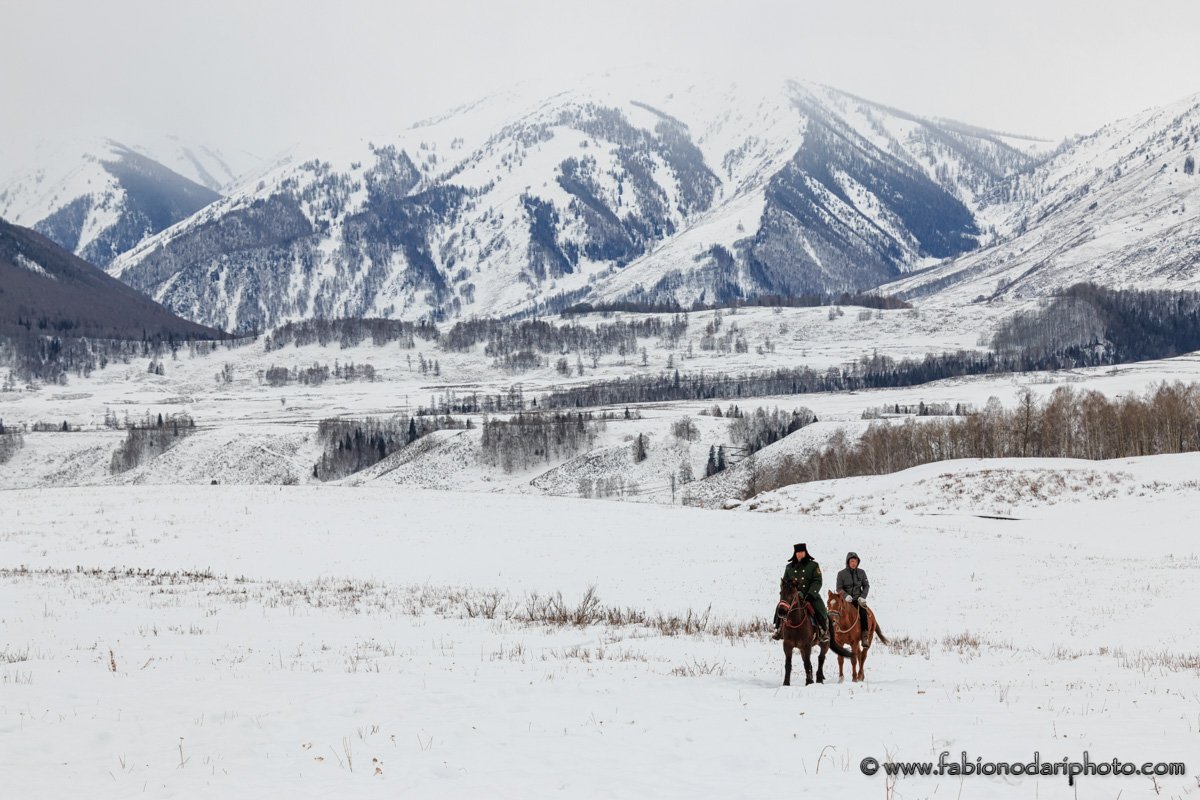
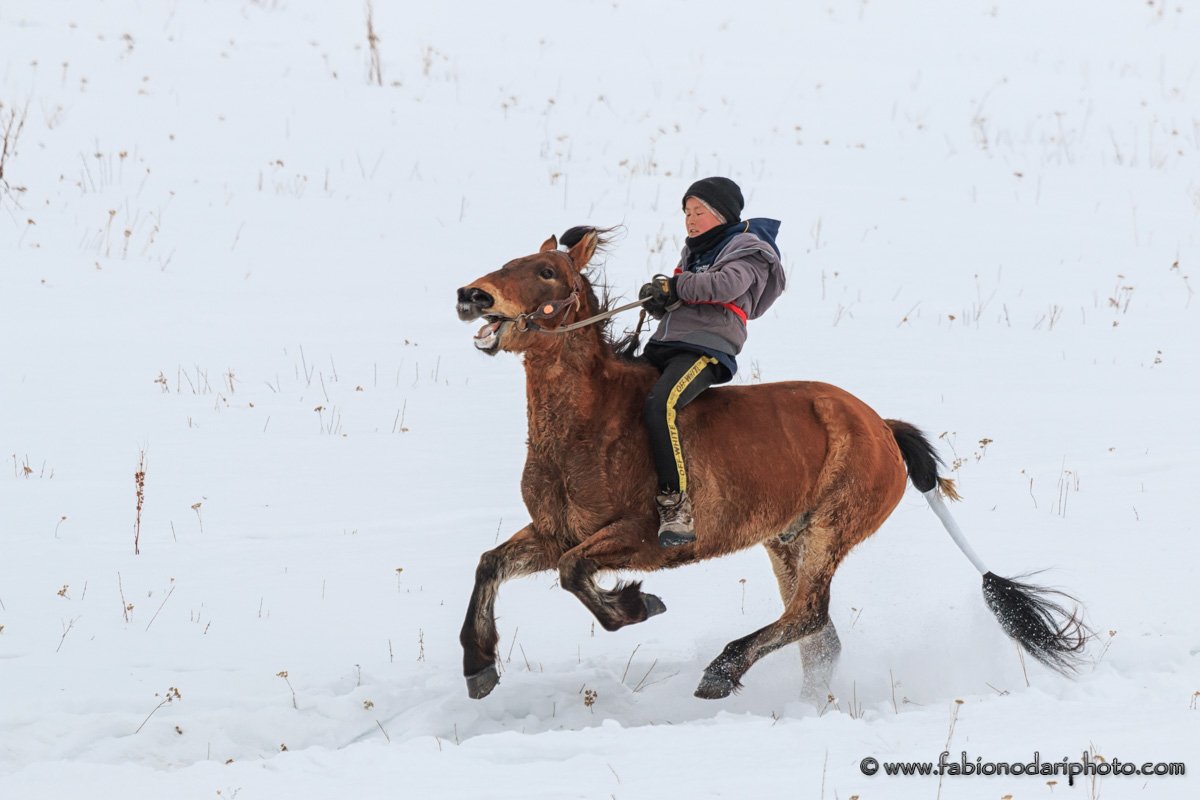
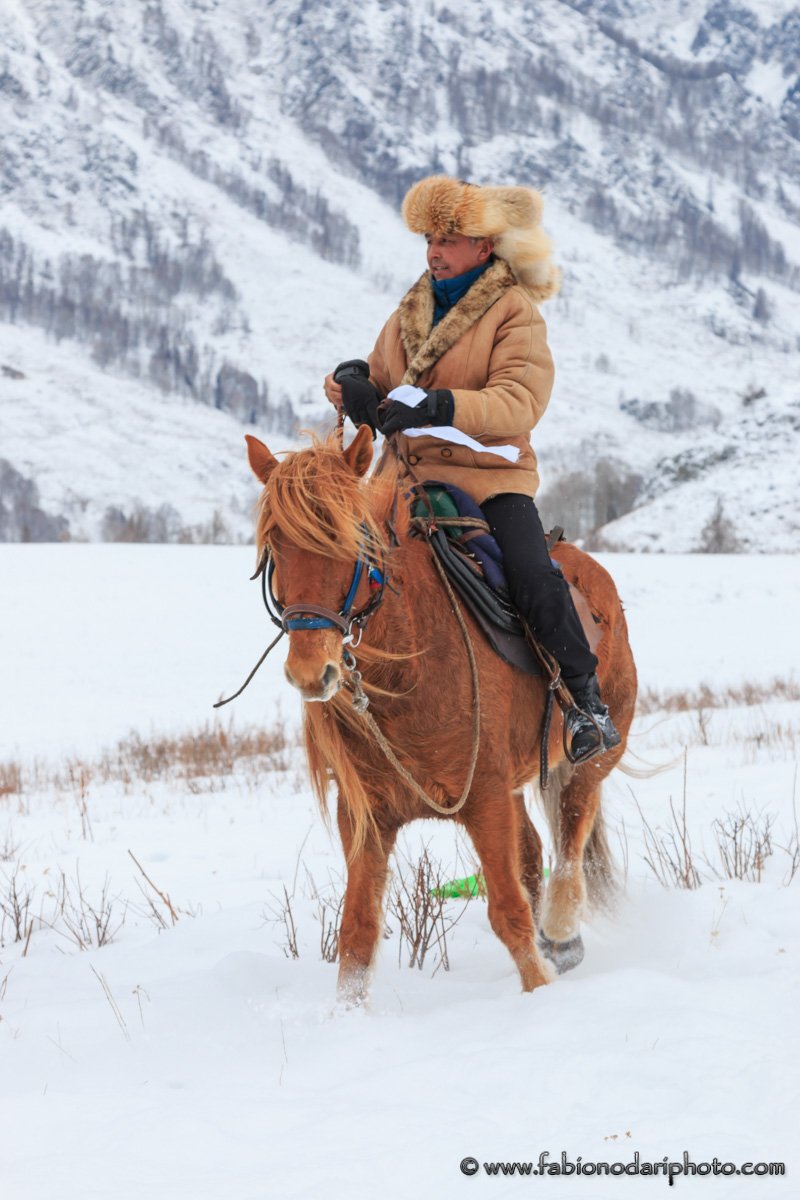
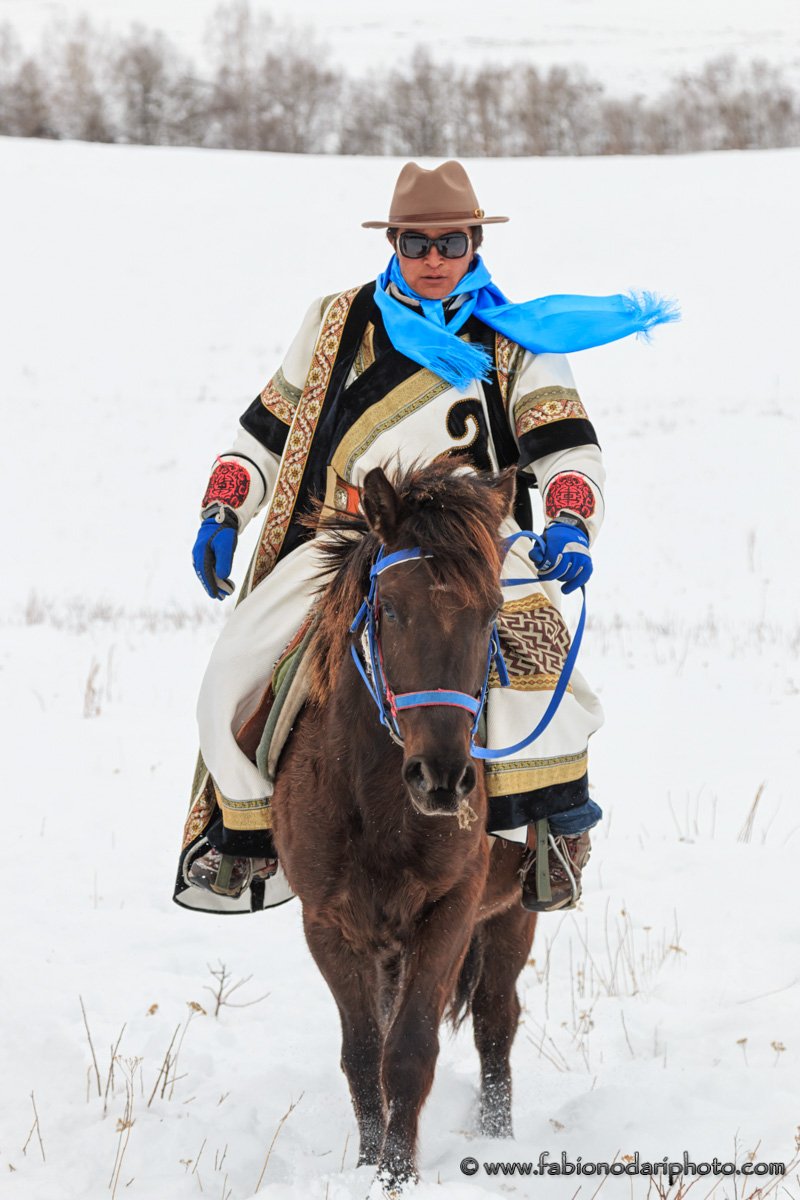
The landscapes in this part of China are, to say the least, wonderful. This is the Hemu village at sunrise, about -25 °C…
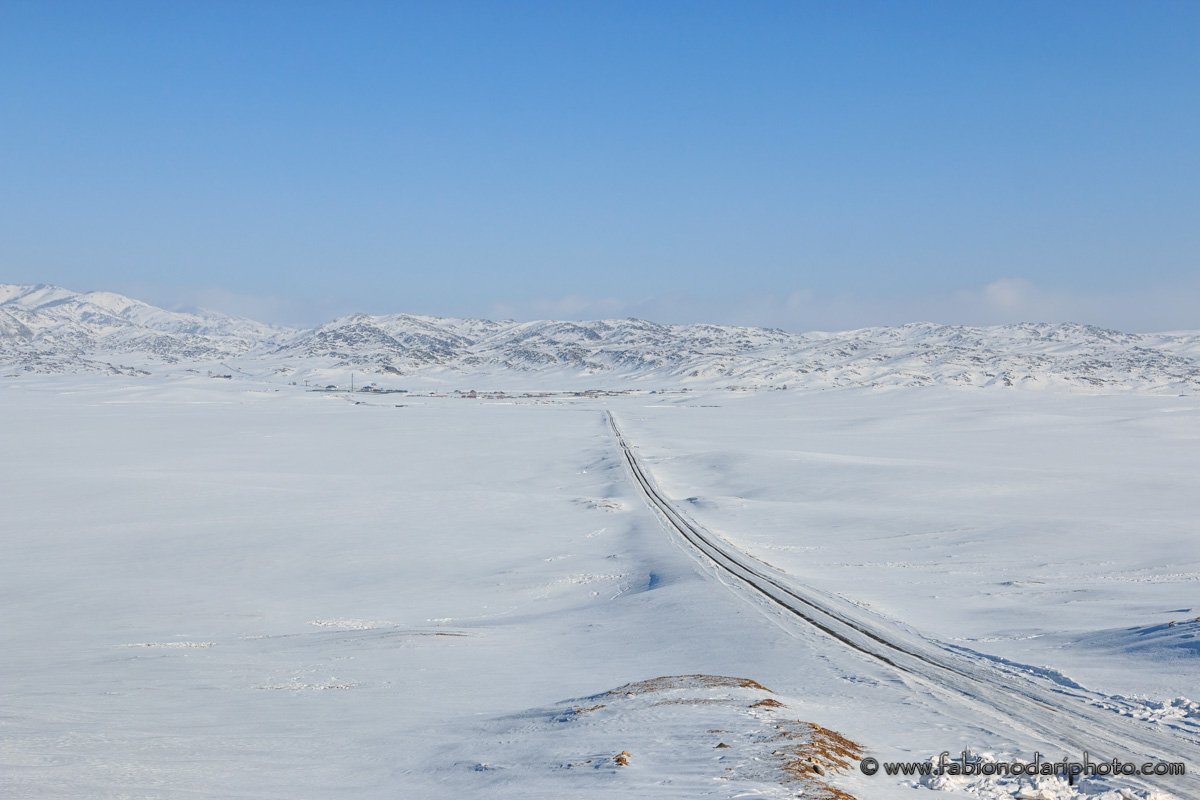
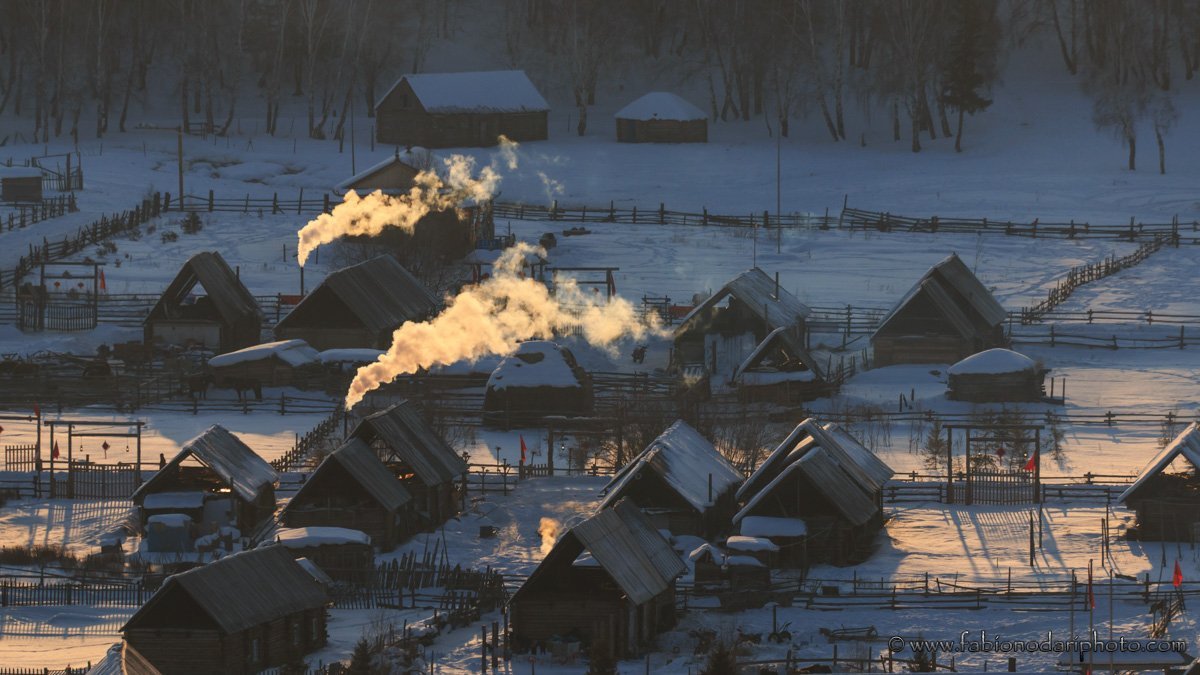
In addition to the Hemu village, a place worth visiting is Kanas Lake, which, in winter, is completely frozen and offers very beautiful scenery in every season. According to local legends, the lake is home to a monster shaped like a Chinese dragon.
It is also possible to see some rare Camels, at least in this area of Xinjiang.

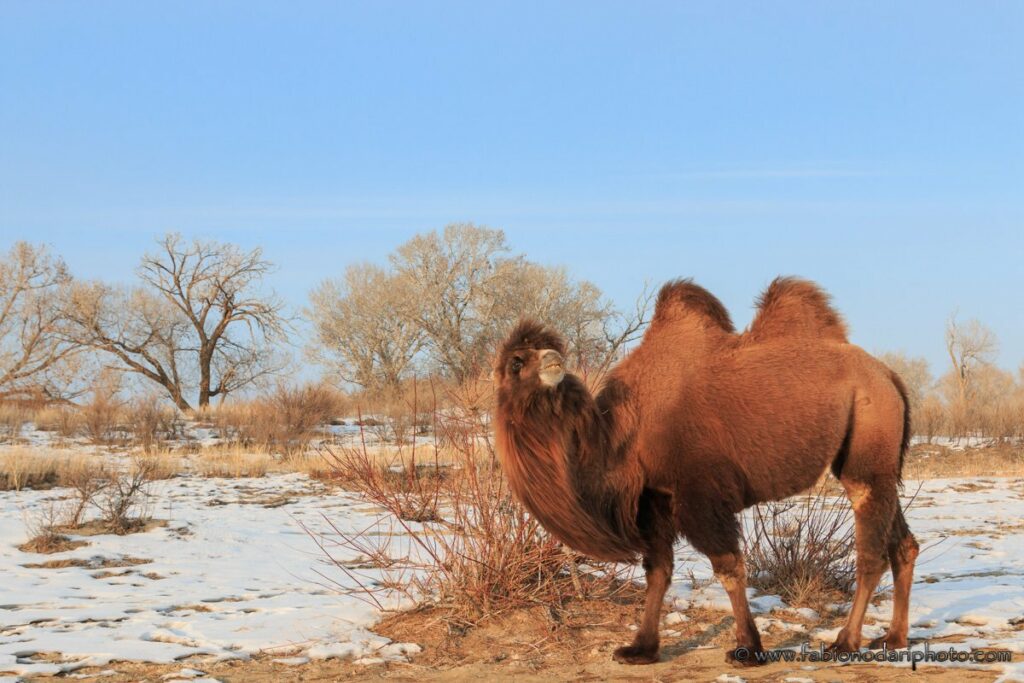
At the end of this trip, I can only say that China never ceases to amaze me. When I thought I had seen enough, I discovered fascinating traditions and places. I think it’s totally worth exploring this fantastic autonomous region.
To conclude, here is the incredible performance of a Tuva singer:
Useful info
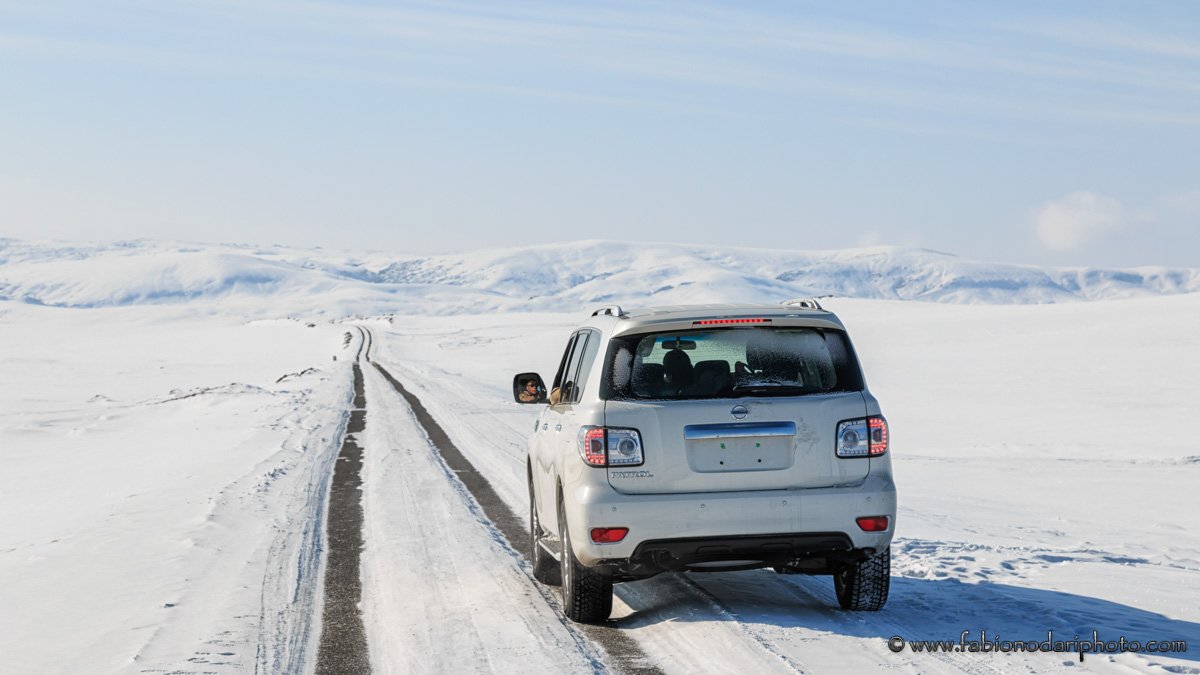
- The best time to visit Hemu and Kanas is probably Autumn when temperatures are not too low, and you can photograph spectacular autumn landscapes, but you should expect a lot of tourists. Winter offers totally different views, with a lot of snow, and it’s also possible to ski.
- In the Hemu Village, only a couple of hotels accept foreigners.
- Always bring with you your passport and be patient and friendly. The police will stop you many times.
- To book your hotel, I recommend Trip.com since it has way more options than Booking.com.
- Don’t forget to get a VPN before travelling to China to access the Internet.
Here’s my complete travel guide to China. Here is my guide to a far easier place to visit: Jiangsu province. Here’s an article about Xijiang: a place with a similar name but completely different. If you are fascinated by Central Asia, don’t miss these two posts, where I talk about some things to do in Kazakhstan and Kyrgyzstan.
